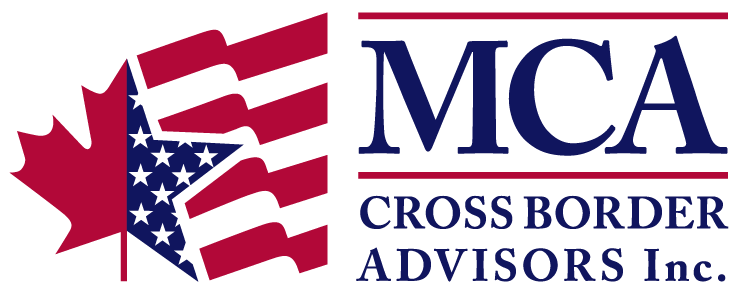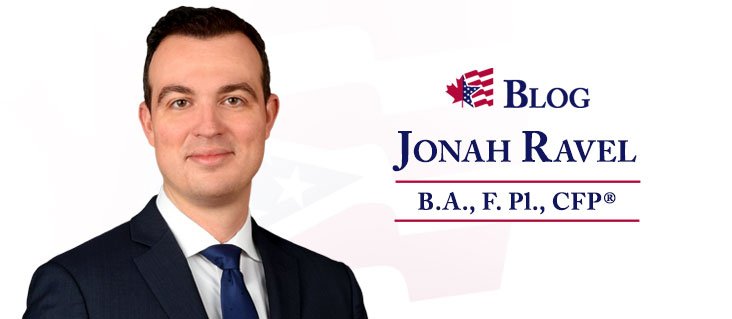Death and taxes, so they say, are the only two things of which you can be fully certain. Combining both, in the form of taxes at death, would seem inevitable. Death is typically the final opportunity for a government to collect taxes on an individual’s income so it’s not surprising that death gets viewed as a tax event. And yet, from a cross-border perspective, the imposition of taxes at death is very different in Canada than it is in the U.S., which creates the need for customized cross-border estate planning.
It’s widely known that the U.S. has a federal estate tax, which detractors like to refer to as “death tax,” but is it really true that we don’t have a death tax in Canada? The fact is that even though we may not officially have a death tax in Canada, most Canadians incur a far greater tax liability at death than most Americans do: for the vast majority of U.S. residents, there is zero tax liability at death.
Death Tax in Canada
In Canada, we used to have both federal and provincial estate taxes, but the federal government repealed its estate tax as part of a major tax reform that replaced it with capital gains tax as of 1972. The various provinces continued to collect estate taxes in the form of “succession duties,” but they all gradually repealed these as well, with Quebec being the last province to do so in 1986.
With the introduction of capital gains tax, the Canadian federal government stopped collecting a value-based transfer tax on assets held at death, which is what we commonly associate with the term “estate tax.” Instead, an appreciation-based tax was introduced on previously untaxed asset growth, not just at death but also at other tax events that occur during a taxpayer’s lifetime including asset sale and departure from Canada.
In other words, with the introduction of capital gains tax, far from getting out of the business of tax collection at death, the Canadian federal government continued to treat death as a tax event but merely in a different form. Going forward, a taxpayer’s death would give rise to a “deemed disposition” by which certain assets would be presumed sold, leading to the collection of tax.
Since October 2000, the capital gains inclusion rate in Canada has been 50%, meaning that upon the death of Canadian taxpayers, half of any previously unrealized appreciation on capital assets gets taxed, leading to tax at rates as high as 27% depending on the province of residence of the deceased taxpayer. On tax-deferred retirement assets held at death such as Registered Retirement Savings Plans (RRSPs), the inclusion rate is 100% since the entire value of these assets, not just the appreciation, was previously untaxed. This can lead to the estate paying tax on retirement assets at rates as high as 54%. Married couples can take advantage of a spousal rollover, which defers the deemed disposition to the death of the second spouse.
Death Tax in the U.S.
In the U.S., the situation is reversed. No capital gains tax is imposed at death, but a value-based estate tax applies on the worldwide asset value of taxpayers considered to be domiciled in the U.S. at the time of death. The U.S. federal estate tax is unified with a transfer tax regime that includes gift taxes, something we don’t have in Canada. Various states in the U.S. also impose state-level estate taxes.
However, the crucial difference when comparing U.S. federal estate tax to Canadian deemed disposition tax is the range of the affected population. Tax arising from the deemed disposition at death affects most Canadians: barring techniques such as the spousal rollover, the estates of most Canadians are impacted by the deemed disposition at death since the value of capital assets held at death is irrelevant—even modest holdings are subject to the deemed disposition. In the U.S. by contrast, the estate tax affects only an extremely wealthy minority of the population. The overwhelming majority of U.S. taxpayers, about 99.8%, are not affected by U.S. federal estate tax due to the generous exemption levels.
The U.S. federal estate tax exemption threshold has climbed over the years. In 2001, the exemption was set at $675,000 USD, and by 2011 it had climbed to $5 million USD. Since that year, the exemption has been indexed to annual inflation, and now stands at $5.45 million USD in 2016. The way the exemption works is that if a U.S. domiciled taxpayer dies with worldwide assets below the exemption threshold, a “unified credit” prevents any estate tax from being imposed. Where a deceased taxpayer’s worldwide asset value exceeds the exemption threshold, estate tax is imposed on the excess at a current rate of 40%. Because of what’s known as the unlimited marital deduction, U.S. citizen spouses can combine their respective exemptions, delaying any potential estate tax that would otherwise have been imposed at the death of the first spouse. This doubles the estate tax exemption at second death, effectively exempting up to $10.9 million USD at the current threshold.
It’s unknown how the U.S. federal estate tax will evolve over time—Hillary Clinton has proposed for instance in her election platform to reduce the exemption to the 2009 level of $3.5 million USD and to raise the top rate on the very wealthiest of estates to 65%.
What’s important to note is that because the U.S. doesn’t currently impose any capital gains tax at death unlike the deemed disposition that Canadians face on their assets at death, U.S. taxpayers can effectively avoid capital gains tax by holding on to assets with unrealized appreciation throughout their lives. Their heirs get a generous tax break known as a step-up in basis, which means that assets get transferred at death with a new tax basis equal to the fair market value at death. This prevents the appreciation that occurred during the deceased’s lifetime from ever getting taxed. President Obama’s 2017 budget proposed to introduce sweeping tax changes including the elimination of this step-up in basis, however given the current divisiveness in the U.S. Congress, it is unknown whether these proposals will ever see the light of day.
Conclusion
While we may be tempted to think that Canada has no estate tax, the reality with deemed disposition at death is that we effectively do have a Canadian death tax, one that affects most Canadians. While the U.S. has federal and state-level estate taxes, the estates of most U.S. taxpayers are spared of any tax liability.
The comparison above has been limited for the sake of simplicity to the situation at death affecting Canadian residents and U.S residents. High net worth Canadians who don’t reside full-time in the U.S. but who own U.S. assets, like snowbirds with a home in Florida, could still face potential estate tax exposure if cross-border tax planning is not carried out in advance. Fortunately, sophisticated planning techniques are available both for Canadians with U.S. assets and for Canadians planning to move to the U.S. to mitigate or eliminate estate tax exposure.
Should you wish to discuss cross-border estate planning, please request a consultation with MCA Cross Border Advisors, and we’ll be pleased to go over your unique situation.
[su_button size=”6″ url=”https://mcacrossborder.com//consultation/” background=”#10155e”]Request a Consultation[/su_button]
——–
MCA Cross Border Advisors, Inc. is a registered investment adviser. Information presented is for educational purposes only and does not intend to make an offer or solicitation for the sale or purchase of any specific securities, investments, or investment strategies. Investments involve risk and, unless otherwise stated, are not guaranteed. Be sure to first consult with a qualified financial adviser and/or tax professional before implementing any strategy discussed herein. Past performance is not indicative of future performance.

